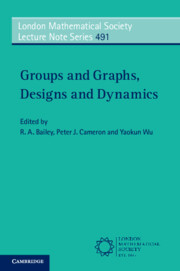3 - Laplacian eigenvalues and optimality
Published online by Cambridge University Press: 11 May 2024
Summary
Eigenvalues of the Laplacian matrix of a graph have been widely used in studying connectivity and expansion properties of networks, and also in analyzing random walks on a graph. Independently, statisticians introduced various optimality criteria in experimental design, the goal being to obtain more accurate estimates of quantities of interest in an experiment. It turns out that the most popular of these optimality criteria for block designs are determined by the Laplacian eigenvalues of the concurrence graph, or of the Levi graph, of the design. The most important optimality criteria, called A (average), D (determinant) and E (extreme), are related to the conductance of the graph as an electrical network, the number of spanning trees, and the isoperimetric properties of the graphs, respectively. The number of spanning trees is also an evaluation of the Tutte polynomial of the graph, and is the subject of the Merino–Welsh conjecture relating it to acyclic and totally cyclic orientations, of interest in their own right. This chapter ties these ideas together, building on the work in [4] and [5].
Information
- Type
- Chapter
- Information
- Groups and Graphs, Designs and Dynamics , pp. 176 - 265Publisher: Cambridge University PressPrint publication year: 2024
